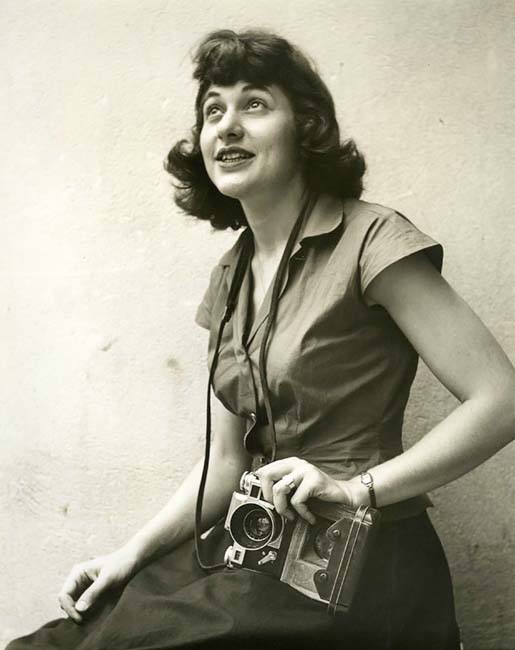
RUTH ORKIN
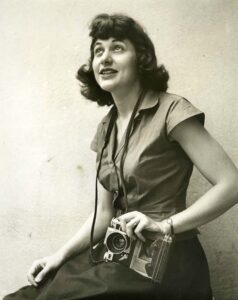
Country: United States
Birth: 1921 | Death: † 1985
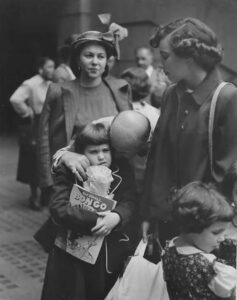
She briefly attended Los Angeles City College for photojournalism in 1940, prior to becoming the first messenger girl at MGM Studios in 1941, citing a desire to become a cinematographer. She left the position after discovering the union’s discriminatory practices that did not allow female members. She joined the Women’s Auxiliary Army Corps during World War II, in 1941 in an attempt to gain filmmaking skills, as advertisements promoting the group promised. The attempt was not fruitful, however, and she was discharged in 1943 without any filmmaking training. In 1943, Orkin moved to New York City in pursuit of a career as a freelance photojournalist. She began working as a nightclub photographer and received her first assignment in 1945 from The New York Times to shoot Leonard Bernstein. Shortly after, her freelance career grew as she traveled internationally on assignments and contributed photographs to Life, Look, Ladies’ Home Journal, and others. Orkin is credited with breaking into a heavily male field.
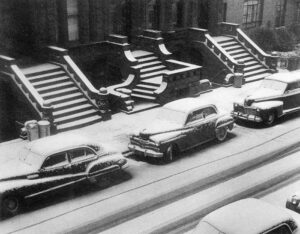
Orkin’s most celebrated image is An American Girl in Italy (1951). The subject of the now-iconic photograph was the 23-year-old Ninalee Craig (known at that time as Jinx Allen). The photograph was part of a series originally titled Don’t Be Afraid to Travel Alone. The image depicted Craig as a young woman confidently walking past a group of ogling Italian men in Florence. In recent articles written about the pair, Craig claims that the image was not staged, and was one of many taken throughout the day, aiming to show the fun of traveling alone.
In 1952 Orkin married photographer, filmmaker, and fellow Photo League member Morris Engel. Orkin and Engel collaborated on two major independent feature films, Little Fugitive which was nominated for an Academy Award in 1953, and Lovers and Lollipops (1955). After the success of the two films, Orkin returned to photography, taking color shots of Central Park as seen through her apartment window. Ruth photographed marathons, parades, concerts, demonstrations, and the beauty of the changing seasons. These photographs were the subject of two widely acclaimed books, A World Through My Window (1978) and More Pictures From My Window (1983).
Orkin taught photography at the School of Visual Arts in the late 1970s, and at the International Center of Photography in 1980. After a long struggle with cancer, Orkin passed away in her apartment, surrounded by her wonderful legacy of photographs with the view of Central Park outside her window, on January 16, 1985.
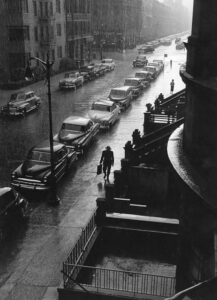
Ruth Orkin was an award-winning photojournalist and filmmaker. Orkin was the only child of Mary Ruby, a silent-film actress, and Samuel Orkin, a manufacturer of toy boats called Orkin Craft. She grew up in Hollywood in the heyday of the 1920s and 1930s. At the age of 10, she received her first camera, a 39 cent Univex. She began by photographing her friends and teachers at school. At 17 years old she took a monumental bicycle trip across the United States from Los Angeles to New York City to see the 1939 World’s Fair, and she photographed along the way.
Orkin moved to New York in 1943, where she worked as a nightclub photographer and shot baby pictures by day to buy her first professional camera. She worked for all the major magazines in the 1940s, and also went to Tanglewood during the summers to shoot rehearsals. She ended up with many of the worlds’ greatest musicians of the time including Leonard Bernstein, Isaac Stern, Aaron Copland, Jascha Heifitz, Serge Koussevitzky, and many others.
In 1951, LIFE magazine sent her to Israel with the Israeli Philharmonic. Orkin then went to Italy, and it was in Florence where she met Nina Lee Craig, an art student and fellow American, who became the subject of American Girl in Italy. The photograph was part of a series originally titled Don’t Be Afraid to Travel Alone about what they encountered as women traveling alone in Europe after the war.
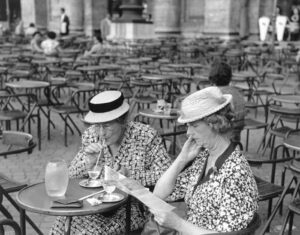
Boston-born Ruth Orkin grew up in Los Angeles, and the movie industry and music were both formative influences. She attended Los Angeles City College briefly in 1940 before becoming the first female studio messenger ever hired at Metro-Goldwyn-Mayer in the early 1940s; but with no hope for promotion, she joined the Women’s Auxiliary Army Corps, tempted by the promise (empty, as it turned out) that she would be taught cinematography. After completing her service in 1943, she moved to New York and worked as a nightclub photographer. Orkin honed her skills in portraiture by spending the summer of 1946 documenting the Tanglewood Music Festival; later that year, LOOK published her first major photo essay, Jimmy, the Storyteller. She sent the series to Edward Steichen at the Museum of Modern Art in 1947, and he subsequently included her in every group photography show at the museum until his retirement, including the great 1955 exhibition, The Family of Man. Orkin married photographer Morris Engel in 1952, and the couple collaborated on a prize-winning film, Little Fugitive. Their filmmaking endeavors continued through the mid-1950s, and while Orkin continued to photograph, she admitted that still photography “held little interest” after her experience of making a film. Her views of Central Park, taken from her apartment, were published in the 1978 book A World Outside My Window.
Orkin’s photography is a celebration of fearlessness and vitality. While she accepted specific assignments from The New York Times and various magazines, she also had the freedom to work independently, creating photo essays and photographing famous people with the knowledge that she would be able to sell the resulting work. Like a film director, Orkin created images that appear to be private moments and lends a Hollywood-style personality to her subjects and landscapes.


